Lea Wait's Blog, page 49
December 17, 2023
Some Christmas Stories for You
 Kate Flora: Every year I write a Christmas story for you. This year, the season is too busy and the story is going very slowly, so here are the links to the past four stories, and the beginning of this year’s, which I will finish and post the rest on Wednesday.
Kate Flora: Every year I write a Christmas story for you. This year, the season is too busy and the story is going very slowly, so here are the links to the past four stories, and the beginning of this year’s, which I will finish and post the rest on Wednesday.
Enjoy!
Kiki Saves The Day: A Christmas Story
I should introduce myself properly. My name is Kiki. I have white curly hair and shiny dark eyes. I am middle aged and I weigh a trim eighteen pounds. I love exercise, primarily walking, have a fondness for treats, and can dance on my hind legs to entertain my human.
Ah, yes. My human. I have primary responsibility for a human named Andy. More properly Andrew, but no one calls him that. Andy is in what humans call old age, meaning he is more than fifteen in dog years. Andy isn’t exactly lazy but without me, he wouldn’t get much exercise. I do my best to take care of him, which is sometimes difficult. Andy likes to sit at his desk and work, so my challenge is to find ways to get him to leave his work and come outside.
Once he’s outside, he’s usually glad he’s there. Andy isn’t so much antisocial as he is shy. We have good neighbors, though, who understand about his shyness and find ways to engage with him anyway. There’s Alice, across the street, who worries about his nutrition and is always bringing him—us—food. We’re lucky that Alice is a good cook, because without her visits and the casseroles she brings, Andy would forget to eat. He’s what I’ve heard called “an absentminded professor.”
Alice had a dog that looks after her, too. A lumbering, joyous black Lab named Otto. People might scoff at this, since we’re animals, but I consider Otto to be my best friend. While Alice visits with Andy and catches him up on what’s happening in the neighborhood, Otto and I race around the yard. As a great example of why Otto is my friend, he is very considerate of the fact that he’s about three times my size, so he slows his pace to accommodate my short legs.
I guess I can say this: I really love Otto. He’s so kind and caring. He’s also smart, which his lumbering gait and exuberance don’t reveal. He can find things that people have lost. He’s good at comforting children who’ve fallen or who are shy and scared. He’s very protective of Alice and will get between her and anyone or anything he perceives as a threat. He can also catch a ball in midair and will carry his favorite stick for a mile if he and Alice are walking.
I watch the news with Andy every night, curled up on the sofa on my special blanket, and I often wish that humans could be as good as Otto instead of hurting each other.
We have other good neighbors, too. On one side of our house we have Mike and Sally and their twins, Leo and Cleo. The twins are just learning to walk and it is very funny to watch. Sometimes Otto will walk with them so they have something to grab onto if they think they might fall. I wouldn’t be good at that. I am good at dancing to make them laugh and believe me, a toddler’s laugh is a marvelous thing. Even Andy, who is shy around children, loves the twins. Leo, who talks more, called him “Dandy” which makes him laugh.
Lest you think our neighborhood is all sweetness and light, I must tell you about our neighbor on the other side, Bad Billy. I didn’t name him that, even though I like the alliteration. Andy did. He’s usually not very judgmental but it would be hard for anyone not to judge Bad Billy. He’s so disagreeable it’s almost as though he had a smelly green cloud around him, like a poison gas or something.
Right. You are thinking: How would a dog know about poison gas, right? Well, remember that we dogs have excellent senses of smell. Far better than humans. So of course I know that Bad Billy doesn’t bathe often and consequently stinks. The use of the term “poison gas” though, comes from Andy. He isn’t normally very critical. He lives so much in his head that he pretty much ignores the world around him unless forced into being observant by neighbors like Alice or Mike and Sally.
Anyway, about Billy. He’s the sort to complain about everything. He will call up to complain about a barking dog, even though I am a very well-behaved animal. He will kick over our trashcans if he thinks they’re on his property, even though Andy is very careful not to encroach. And while he complains about anyone else’s noise, he will play his loud music late into the night. And he has very bad taste in music. He calls Leo and Cleo snot rats.
You get the picture.
So mostly our lives are pleasant and we do our best to ignore Bad Billy.
I think I told you this story is about Christmas, didn’t I? Christmas is a big deal in our town. People try to outdo each other with their decorations. It’s fun, though. Not an over-the-top competition such as happens in some places. I know this because I’ve seen it on the news and Andy will say, “Aren’t we lucky that we live here, Kiki, where people are pleasant?” I will bark an affirmative and we will go back to watching TV.
Lately the news has been so unpleasant that even Andy, who has a very calm and curious nature, will change the channel. This year we are watching Hallmark Christmas movies. Andy says that when he was younger, he couldn’t stand them, but now that he’s older and slowed down and the world is in such a mess, he enjoys the romance, the small conflicts, the pretty small towns, and their message of love and happiness.
Once in a while he’ll sigh and say he wished he’d had a family. Andy did have a wife once. I never met her but he tells me about her sometimes. He says she was beautiful and fun and used to sing as she did her housework and cooked. He says her name was Norah, which I think is a very pretty name, and when he says it, that single word is infused with love and memory. Andy and Norah never had any children, which he regrets, but he signs and says that sometimes life doesn’t give you what you hope for, so you have to make the best of what you have,
Andy, in case you didn’t guess this because of his shy nature and the hours he spends at his desk, is a retired teacher. Sometimes when we’re out for one of our walks, he’ll meet a former student and they’re always happy to see him, so I guess he was not one of those mean teachers who made all his students feel inadequate. Quite the opposite. I think he was inspiring. I mean, I am only a dog but he inspires me. He makes me feel like I am special, and worthy, and a great companion.
When I say my job is to look after him, I mean that Andy is getting older and slowing down and he sometimes forgets things. If he leaves the keys in the door, for example, I will gently nudge him back to get them. If we’re going to leave the house and he doesn’t put them in his pocket, I will nose his pocket to remind him. He always laughs and says, “What would I do without you, Kiki,” which makes me feel very good.
When Alice stops in with one of her casseroles, she will pet me and say, “Now you keep an eye on Andy, Kiki. He depends on you.”
It’s a lot of responsibility for an eighteen pound creature, but I do my best.
Anyway, it’s the holiday season and our street is aglow with colored lights and silly inflatable Santas and reindeer and snowmen. It’s lovely to see and people are smiling. We aren’t big on decorations because Andy is old and alone, but he tries. We have lights around the porch and a big wreath on the door and a funny metal tree with lots of lights that’s also on the porch. Andy says he doesn’t care that much about Christmas but he doesn’t want to let the neighborhood down.
Alice goes all out with strings of lights on her trees and along her porch and some crazy blue waterfall lights people stop to watch. Of course, Alice has her husband and children to help. Otto says the whole family gets excited about doing it. Last year, one of the kids even got an illuminated leash for him, so he can be part of the fun. I admit I’m a bit envious and have to remind myself how good I have it. After all, I began my life in shelter, surrounded by dogs nobody wanted.
When I think of that, it makes me sad until I remember the day that Andy came looking for a dog. He was sort of shambling down the row where we were all in cages like we were prisoners. He looked like seeing us just made him more unhappy, so I went over to the bars and stuck out my paw, like I wanted to shake hands. Really it was because I wanted to comfort him. He stopped and crouched down and shook my paw. Our eyes met and that was that. Kind of like in those movies we watch, except that he’s a man and I’m a dog. Anyway, I came home with him and we’ve been best friends ever since. Our own happily ever after.
Our lives were going along as usual, Andy puttering at his desk and I watching dust motes in a streak of sunlight, when something most unusual happened. The doorbell rang.
Uh. I should clarify: it wasn’t the ringing of the doorbell that was unusual. It was the person on the other side of the door.
Andy shuffled toward it, his slippers making those scuffing, old man sounds that made me want to chew them up so he couldn’t wear them anymore, and opened it. He was probably expecting Alice, since it was around her usual time to bring us food. Instead, he opened the door, saw the woman standing there, and stepped back in shock, his hands to his chest.
I’ve watched TV so I know, when someone puts their hand on their chest, they’re either having a heart attack or they’ve been shot. There had been no noise, so Andy wasn’t shot. I rushed to his side, hovering there in case he needed me.
The woman said, “Aren’t you going to invite me in?” not in an angry way but in a sweet and puzzled way, and Andy stepped back and gestured for her to enter. Without a word, he led the way into the living room and collapsed onto the couch. She took a seat in a chair facing him and waited.
I decided I’d better give him time to recover, so I followed them into the room, did my little Kiki dance for her, and then planted my head on her knee. We would soon know whether this was a dog-friendly person or the kind who says, in a cranky voice, “Sorry. I am not a dog person.”
She was a dog person. Definitely, the way she stroked around my ears and along my back and said, in an apologetic voice, “I’m sorry I don’t have any treats for you.”
A dog just knows, right?
By then, two things had happened. First, Andy had recovered enough to speak, and I realized the woman looked like the photos of Norah that were around the house. So who was this person?
“As you’ve guessed,” our visitor said, “I am Norah’s sister Maeve.”
“Twin,” Andy said. “You’re her twin.” He sounded like he was choking on the words. He could barely get them out.
“She never told you, did she, that she had a twin?” the woman said.
Andy nodded.
“She probably never knew.”
Andy and I were both puzzled. How does a person not know they have a twin?
“I know.” The woman’s voice was soft and pleasant. A very nice voice. I imagined her sayinh, “Here, Kiki” and giving me a treat. It was that kind of voice.
“I know that it sounds impossible. I didn’t know about it myself until recently, and frankly, it made me very angry. I was adopted, as was Norah, and a few years ago, I decided to look for my birth parents. You know . . . I imagine . . . that many adopted children feel a sense of not belonging, if not a great curiosity to know why they were given up and whether there are people other there in the world who are like them. Parents, aunts or uncles, siblings or cousins.”
She stopped talking and put a hand to her lips. “Excuse me. I’m so sorry to barge in like this and then start babbling at you like an idiot. This must be a great shock.”
By now, Andy had recovered somewhat and was staring at he with what humans probably call wonder.
“Babble all you want,” he said. “My Norah . . . your sister . . . your twin . . . she did the same. I always found it charming. It was fun to see where her conversation would go.” He waved a hand, more animated than I’d seen him in a long time. “Go on.”
“They aren’t very cooperative, these agencies, even though the laws are more liberal now. It took a lot of work, so much I sometimes felt more like a detective than like a woman who wanted to know her story. And then, when I finally discovered the fascinating truth that I had been one of a pair of identical twins and we’d been given to different families and never told . . . Well,” she spread her hands in one of those human gestures that can mean many things, “I was amazed and furious. Then, just when I was excited that I not only had family but a sister just like me, I learned that Norah was dead.”
She slapped her hands down on her knees, and I gave a startled yip and moved away. She looked at me. “Sorry. I can get carried away.”
December 15, 2023
Weekend Update: December 16-17, 2023
 Next week at Maine Crime Writers there will be posts by Kate Flora (Monday), Maureen Milliken (Tuesday), Sandra Neily (Thursday) and Dick Cass (Friday).
Next week at Maine Crime Writers there will be posts by Kate Flora (Monday), Maureen Milliken (Tuesday), Sandra Neily (Thursday) and Dick Cass (Friday).
In the news department, here’s what’s happening with some of us who blog regularly at Maine Crime Writers:
John Clark along with Matt Cost and Vaughn Hardacker, were at the biggest author event ever last weekend. We were part of 100 authors and poets filling the Bangor Public Library. Here are some photos of the event.
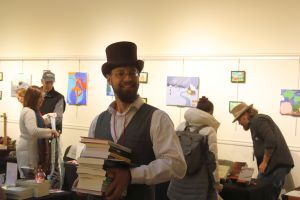
Christopher Packard, the man who made it happen.
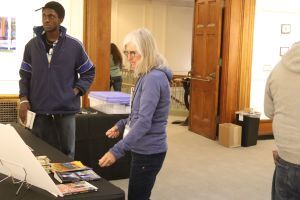
Brook Merrow is on the left, her YA mystery, Trapped, is a top notch read.
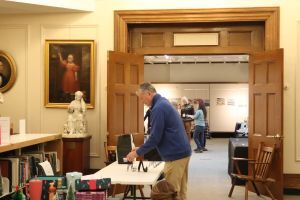
Matt Cost setting up.

Some people were very civil
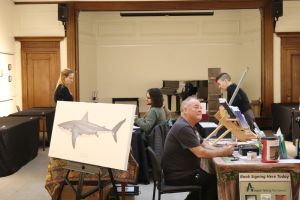
Tim Caverly, author of many Maine books for kids.

Colorful displays abounded.
An invitation to readers of this blog: Do you have news relating to Maine, Crime, or Writing? We’d love to hear from you. Just comment below to share.
And a reminder: If your library, school, or organization is looking for a speaker, we are often available to talk about the writing process, research, where we get our ideas, and other mysteries of the business, along with the very popular “Making a Mystery” with audience participation, and “Casting Call: How We Staff Our Mysteries.” We also do programs on Zoom. Contact Kate Flora
December 14, 2023
One Writer’s Christmas Traditions
Kaitlyn Dunnett/Kathy Lynn Emerson here, this time writing about my personal Christmas traditions. A lot of the things I did in my younger days aren’t practical any more. We stopped decorating the house ages ago out of respect for our sanity—Christmas decorations, particularly Christmas trees, and cats, do not mix! I don’t bake cookies and other goodies because we aren’t the ones entertaining family and my nieces are much better at it anyway. What does that leave? Why movies and books, of course.

By the time you read this, I will already have worked my way through at least my top four Christmas favorites. I’ve heard it suggested that the ideal order for two of them is Love, Actually followed by Die Hard. Why? Alan Rickman is in both. If you look at what his character does in the first, one could say that what happens to his character in the second is poetic justice. I know. That’s a stretch. But admit it, the concept made you smile.
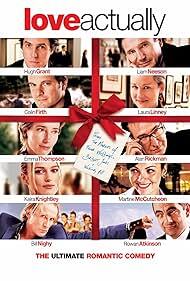
The Holiday is also on my list, despite the fact that none of the four lead actors are particular favorites of mine. There’s just something about the story that grabs me. Plus there’s a wonderful subplot involving an elderly screenwriter.
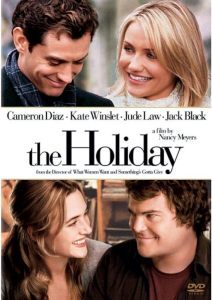
Well before any of those movies were made, and before DVDs and streaming were even invented, I regularly watched both White Christmas and Holiday Inn on network TV. I had a little thing for Bing Crosby growing up. These days I find scenes in both that are cringeworthy, but still watch. I have a definite preference for the latter, but that could be because it has Fred Astaire as well as Bing Crosby. I fast forward through the Lincoln’s Birthday number. Blackface wasn’t considered demeaning when the movie was made, but times and attitudes change.

Moving on to books, there are plenty of Christmas titles out there, including several I wrote myself, but my hands-on favorite, and a definite annual reread, is Charlotte MacLeod’s Rest You Merry. It’s irreverent, funny, and the first book in her wonderful Peter Shandy series.
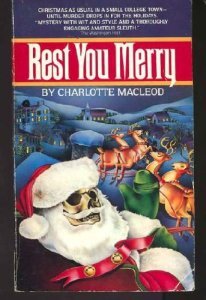
I’ll probably reread at least one of Donna Andrews’ Christmas mysteries, too. The trick will be picking which title, since she adds one to her Meg Langslow series every year. I’ve already read this year’s (Let it Crow! Let it Crow! Let it Crow!), which came out in October, and it did not disappoint.
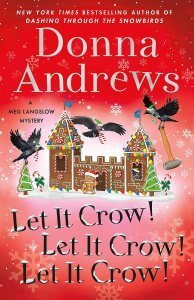
What about you, readers? Do you have “traditional” Christmas watches and reads?

Kathy Lynn Emerson/Kaitlyn Dunnett has had sixty-four books traditionally published and has self published others. She won the Agatha Award and was an Anthony and Macavity finalist for best mystery nonfiction of 2008 for How to Write Killer Historical Mysteries and was an Agatha Award finalist in 2015 in the best mystery short story category. In 2023 she won the Lea Wait Award for “excellence and achievement” from the Maine Writers and Publishers Alliance. She was the Malice Domestic Guest of Honor in 2014. She is currently working on creating new omnibus e-book editions of her backlist titles. Her website is www.KathyLynnEmerson.com.
Excuses, Excuses
There is something to be said for habitually hibernating in winter. In my case, circumstances nearly demanded it, and now I am used to it, perhaps even relishing it. Bears R Us.
Our previous house on McGrath Pond in Belgrade was reached by three-tenths of a mile of twisty, icy camp road through the woods. I cannot tell you how many visitors and delivery people got stuck. UPS refused to come at all until spring.

One time I decided to walk up with our dog to get the mail, only to find a really heavy box at the end of the driveway. To this day, I’m not sure how I made it home. The dog was no help at all, and I remember leaning against a high snowbank trying to catch my breath, sweating (!), wondering what the hell I had been thinking. The mail-fetching-on-foot was never to be repeated.
Now, though we live in town in Farmington, we have another tricky, if much shorter, driveway. Even with no bad weather, it’s perfectly possible for me to clip the corner of the house or run into the rhododendrons one way/stone wall the other as I back out down the slope. Factor in a four-foot pile of snow left by our excellent plow guy, and I’m staying home.

I don’t ski or snowshoe or snowmobile. The last time I ice-skated, I twisted my ankle and limped around for weeks. With one replaced knee and another ready to give up the ghost, my mobility is not the best in the best of times. So my sedentary ways become sendentary-er once December rolls around.
I’d like to say this is great for my writing, but that would be a lie. It is also not great for my waistline or Vitamin D consumption. I do a fair bit of gardening, dog-brushing, and zhuzhing in our backyard in the summer, but winter is not conducive to such activities. I will dream indoors over my seed packets instead and vacuum up the dog hair.
However, I’m writing a murder mystery set in December on a Maine island, so I hope to use my aversion to all things frigid and freezing to set the grim tone. Winter’s got to be good for something, right?
“The path to the ice house is icy, which suddenly strikes me as funny. It is not a house at all, but a hole, kind of a cave, built deep into a mound of earth and rocks on the way to our beach. Two overgrown lilac bushes guard it. I know that it’s a fancy, but sometimes when I open the ice box door I can smell spring.”

Are you a fan of cold weather? Inspired by the wooliness in the L.L. Bean catalog? Or are you planning a cruise to the Bahamas? Have a wonderful holiday season no matter where you are!
December 11, 2023
Christmas and Crime Writing

The Christmas season is a reminder that hope and joy can triumph over the evils going on in the world, and in our own hearts. I say this as someone who writes books about mystery and murder, and who often questions his own motives for writing about such topics. Can the two be reconciled?
I’ve said many times that crime writers are often the nicest people I’ve ever met, and I often wondered why that is. A lot of crime writers have had careers in law enforcement, or social service agencies. These are people who have seen evil close-up and personal, and who have dedicated their lives to keeping the rest of us safe from murderers and predators. For this reason, I believe writers write about crime in order to show how justice can prevail over chaos and lawlessness. The criminal usually gets his or her comeuppance by the end of the novel, and sees the error of their ways. Lawfulness and good wins out at the end.
Christmas time is about giving and about expressing goodwill to the people around you. Writers give of themselves fully when they publish books. Their stories come from deep within in them, and emanate from the heart. In many ways, it’s the greatest gift they can give to others, most they don’t even know. Their stories are parables about doing good and to treat others as they would want to be treated. A lot of the time, these stories are redemption tales. Also messages about the pitfalls of breaking the rules that society has created for us. But we all know that morality comes from deep within us.
I’m grateful to my family and friends during this Christmas season, especially my writer friends, and for being born in such a wonderful country that allows us to express our views. I’m grateful that I have the freedom to write the kinds of stories I want, and that I have an amazing publisher that puts them out into the world. Loving our family and neighbors should be an all consuming priority and we should spread such a message of joy and goodwill throughout the year. The state of the world is in rough place right now, but I’m not without optimism. Hopefully someday, most crimes will be a thing of the past and only in crime fiction will we be able to experience such evil.
I hope everyone has a wonderful Christmas and holiday season with their friends and family. Oh, and my new novel, THE ANCHORMAN’S WIFE, will make a wonderful gift for you or any of your crime reading friends and family.
Merry Christmas, Happy Holidays, and Happy New Year!
Best,
Joe
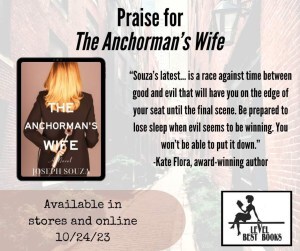
December 8, 2023
Weekend Update: December 9-10, 2023
 Next week at Maine Crime Writers there will be posts by Joe Souza (Monday), Vaughn Hardacker (Tuesday), Maggie Robinson (Thursday) and Kaitlyn Dunnett/Kathy Lynn Emerson (Friday).
Next week at Maine Crime Writers there will be posts by Joe Souza (Monday), Vaughn Hardacker (Tuesday), Maggie Robinson (Thursday) and Kaitlyn Dunnett/Kathy Lynn Emerson (Friday).
In the news department, here’s what’s happening with some of us who blog regularly at Maine Crime Writers:
Maureen Milliken will be at three Authors for Lewiston events in the coming week:
Saturday, Dec. 9, 9:30 a.m.-12:30 p.m. Auburn Public Library, 49 Spring St., Auburn; Thursday, Dec. 14, 6-7:30 p.m., Camden Public Library, 55 Main St., Camden; Saturday, Dec. 16, 9:30 a.m.-12:30 p.m., Lewiston Public Library, 200 Lisbon St., Lewiston.
Authors for Lewiston is raising money for three causes related to the Oct. 25 Lewiston shootings: Central Maine Medical Center Compassionate Care Fund; City of Lewiston Support Fund; Maine Community Foundation Lewiston-Auburn Response Fund.
Up to 20 authors will be on hand selling books, with a portion of their proceeds going to the nonprofit organizations. Stop by and say hi!
In other news, Maureen’s Bernadette “Bernie” O’Dea mystery series is being republished under the Nevermore Mystery Press imprint in anticipation of the fourth book in the series, DYING FOR NEWS, being released in June. The new edition of COLD HARD NEWS, the first book in the series, is available this month, with a new look and revised content. Look for NO NEWS IS BAD NEWS and BAD NEWS TRAVELS FAST early in the new year!

The new cover for COLD HARD NEWS, the first in Maureen Milliken’s Bernie O’Dea mystery series. The series is being republished with a new look and some minor content revisions as a lead-up to DYING FOR NEWS, scheduled for release in June.
An invitation to readers of this blog: Do you have news relating to Maine, Crime, or Writing? We’d love to hear from you. Just comment below to share.
And a reminder: If your library, school, or organization is looking for a speaker, we are often available to talk about the writing process, research, where we get our ideas, and other mysteries of the business, along with the very popular “Making a Mystery” with audience participation, and “Casting Call: How We Staff Our Mysteries.” We also do programs on Zoom. Contact Kate Flora
December 7, 2023
RUBIROSA – The Real James Bond?
by Jule Selbo

Maybe like any other James Bond movie lover, the question of who will be taking over the role from Daniel Craig (No Time to Die was his swan song) has popped into my mind. A few days ago, in a random wonder-wandering on this topic, I came upon a name – one I was not familiar with: Porfirio Rubirosa.
Several amateur-sleuth articles point to this Rubirosa (1906-1965) as a man of Afro-Latino or Creole/Criolo or Meszita descent as the real inspiration. He was in Fleming’s orbit before and during the creation of the James Bond tales. Who was he? A Dominican Republic soldier, a diplomat representing his country, a daredevil, a race car driver, a polo player, an international playboy, a man who earned the title of ‘Caribbean Casanova’, a spy, an assassin – a man of action (ethical and unethical?) in politics, world finance and famous for personal relationships with beautiful women.

Sir Ian Lancaster Fleming (pictured here) never mentioned Rubirosa as an inspiration. In an interview in the London Times, Fleming claimed his popular character was an amalgam of a few individuals: ones he came across during his time in Naval Intelligence during WW II, his own brother, a skiing spy (with the odd name Conrad O’Brian-ffrench), and a combination of MI6 operatives that Fleming had met during the war. The character’s name, he claimed, was chosen because of a book Fleming had on his bookshelf in Jamaica, one written by an American ornithologist named James Bond. In the ornithologist’s NY Times obituary (1989) it was reported that Fleming told the bird-maven’s wife that the name ‘struck me as brief, unromantic, Anglo-Saxon and yet very masculine – just what I needed, and so, a second James Bond was born”.
Others have suggested Bond came together in Fleming’s mind through his reading of British Phyllis Bottome’s 1946 spy novel, The Lifeline, (she had been one of Fleming’s teachers) and characters created by Nigel West, another Brit spy writer. But these two conjectures seem to be just that – dots being strung together by outsiders that don’t really have much “juice” to them.
 Handsome, charming Porifirio Rubirosa (Rubi) is a compelling notion – mostly because his life is the stuff that inspires movies and novels. Fleming and Rubi knew each other and enjoyed many aspects of the suave, Caribbean island-hopping life and being bon-vivants along with Errol Flynn, Noel Coward, Hemingway, Frank Sinatra and other famous, upscale party-goers.
Handsome, charming Porifirio Rubirosa (Rubi) is a compelling notion – mostly because his life is the stuff that inspires movies and novels. Fleming and Rubi knew each other and enjoyed many aspects of the suave, Caribbean island-hopping life and being bon-vivants along with Errol Flynn, Noel Coward, Hemingway, Frank Sinatra and other famous, upscale party-goers.
Born in the Dominican Republic, Rubi grew up in an affluent family (his father was high up in military and political ranks). Rubi spent early and late teenage years in Paris, went home to the DR to study law, got bored, joined the army, and met dictator Rafael Trujillo at a country club (Rubi was an accomplished polo player). Trujillo was impressed, and legend has it that within twenty-four hours, charismatic Rubi was a lieutenant of the President’s Guard. Trujillo also agreed him to let him marry his daughter – this accelerated Rubi’s place on the government’s inside track. Rubi’s ability to commit long-term to one woman brought the marriage to an end in less than five years, but Trujillo did not punish Rubi. Shawn Levy, in his 2005 book on Rubirosa, quotes Trujillo as saying, “He is good at his job, because women like him and he is a wonderful liar.” Trujillo kept Rubi on as an attaché with diplomatic immunity, a spy and – some stories go – as an assassin who protected Trujillo’s regime.

Rubi loved fast cars and rich women. The “Gold Dust Twins” – the heiresses, Doris Duke and Barbara Hutton – were among his five wives.
 His marriage with Hutton lasted 53 days and in the divorce proceedings, he “earned” a DR coffee plantation, a plane, polo ponies, a few race cars and 2.5 million dollars.
His marriage with Hutton lasted 53 days and in the divorce proceedings, he “earned” a DR coffee plantation, a plane, polo ponies, a few race cars and 2.5 million dollars.
 Doris Duke got out of her marriage with him in less than one year – she awarded Rubi a Parisian home, a B-25 bomber, a sports car, a fishing fleet off Africa and (only) $25,000 a year in alimony. (Side note: Rubi was “infamous” for his lovemaking skills. The oversized pepper mill, still used in France (the one the waiter brings to the table to add the spice to your dish) is still called the Rubirosa to this day.)
Doris Duke got out of her marriage with him in less than one year – she awarded Rubi a Parisian home, a B-25 bomber, a sports car, a fishing fleet off Africa and (only) $25,000 a year in alimony. (Side note: Rubi was “infamous” for his lovemaking skills. The oversized pepper mill, still used in France (the one the waiter brings to the table to add the spice to your dish) is still called the Rubirosa to this day.)
A Chicago litigator and forensic historian, Daniel J. Voelker, in 2016, published a paper in attempt to support his belief that Rubirosa was the inspiration for – or at least a great influencer – on the James Bond character.
Here are a few more Rubi facts to consider. (I’ve put together from the research of Voelker and others, let’s see what you think):
Fleming bought his Goldeneye estate in Jamacia in 1946 and spent most of his post-war time there. This is where he started writing the James Bond series. Rubi, when not in the DR or traveling around the world, did a lot of ‘island hopping’ in the Caribbean – this includes time in Jamacia. So did the fictional Bond.Both Rubi and the fictional Bond spent much of their childhoods in Paris.Both wore handmade suits made in England. (Rubi was often on the Best Dressed List and is given credit for inspiring Ralph Lauren’s Polo brand.) Rubi had impeccable style, a dashing charisma, and an adventurous spirit; he captivated everyone he met. The fictional James Bond became famous for similar traits and charms.Rubi was known to look good with a gun – or a cocktail – in his hand. Just like James Bond.Fleming’s first Bond tale was published in 1953. One of the character descriptions Fleming wrote: “…skill at gambling and knowledge of how to behave in a casino…”Rubi ordered his martinis “shaken, not stirred”. So did the fictional James Bond.Rubi was known as the Casanova of the Caribbean, famous for his ability to woo women. Some of his paramours included Dolores Del Rio, Eartha Kitt, the famous Portuguese fado singer Amalia, Marilyn Monroe, Maria Montez, Rita Hayworth, Eva Peron and more. An important part of James Bond’s reputation is his ability to woo the ladies – even those who have been sent to kill him.Both Rubi and the fictional Bond worked out in the boxing ring to keep in shape.Both Rubi and the fictional Bond loved fast cars, polo and gadgets.In the spring of 1952, Rubi spent months scuba diving for treasure off the coast of Jamacia where several Spanish galleons had sunk. The new scuba technology he used was described by Fleming in Thunderball (which he started writing in 1959).Rubi, in his work for the DR, carried a “license to kill” (according to Voelker). Famously, fictional James Bond had a “license to kill”.

Some researchers (including Voelker in 2016) suggest the reasons Fleming never mentioned Rubi was for marketing reasons. Voelker wrote: “Fleming was restrained from identifying Rubi as his inspiration given Rubirosa’s Creole, or mixed racial background; Fleming’s audience in the 1950s and early ’60s may not, unfortunately, have been very accepting of such a revelation.
Perhaps one of the reasons why Rubirosa’s life has gotten attention lately is that a comic named Christopher Rivas has based part of his stand-up on Rubirosa’s life; he’s imagining if Fleming had made Bond of Creole/Criolo or Meszita or Afro-Latin heritage, his life (Rivas’) might be different today. There are a few documentaries on Rubirosa’s life, but IMO, they could be better. However, one of the books I want to check out is written in 2005 by Michael Wall and Isabelle Wall. Its title is Chasing Rubi, The Truth About Porfirio Rubirosa. The book covers their twenty-two years of research on the man – including details in his 700+ page FBI file.
This shallow dive into Rubirosa has me planning to watch the foreign releases (2018 and 2019) TV movies about him, hoping there are subtitles) – but it might be time for a full-scale movie on the life of Rubirosa. Too bad Sean (IMO, the best Bond) is not around to play him.
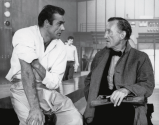
Let’s have more fun

John Clark: Sometime back, I posted a blog with ten story starts and invited readers to tell me which they thought would make good writing projects. Oddly enough, two of them turned into complete books last year, albeit unpublished as of today. I thought I would try it again to see what in might become a piece (or book) in 2024. I invite readers to decide which ones sound most intriguing.
1-Mary-Ellis Gagnon lay quietly, her brain not particularly engaging with a day that began like most others had. She lived in a cold creaky house permeated by the odor of a nearby paper mill. That familiarity was about to be turned upside down in a big way.
2-Everything hurt, but my hands and feet were the worst. Once I was able to get past the pain, I looked around. I wasn’t alone. Everywhere I looked, other people were moaning and hanging from squares that resembled a vertical bingo card.
3-Why couldn’t I die? Nothing I’d ever heard or read came close to this pain. To say that terminal cancer sucked was the understatement of all times. Nathan took a cool wash cloth and bathed my forehead. “There is one thing you have to do before the illness will grant you relief. Do you want to know what that is?”

4-”What do you mean I’m in violation of the dress code? This is a nudist colony.”
5-Lotta folks in Maine think of the Haynesville Woods as the most dangerous place in Maine. It ain’t so. If my cousin Eldrich could speak, he’d for sure tell you the swamp below West Appleton Ridge is a hell of a lot worse, but then, he never made it out of that place.”
6-I sat in a darkened theater, angry, hurt and abandoned. Angry at parents who thought foisting the their tickets onto me would allow them to get hammered at the country club. Hurt when my girlfriend dumped me for some jock, and abandoned by everything and everyone in my life. A half pint of stolen vodka had blurred my edges and I must have dozed off. I awoke, feeling confused, then was overcome by complete numbness when I looked at the Lakewood Theater program In my hand. It looked brand new, but featured a play called Naughty Cinderella and was dated August 13, 1932, ninety years ago.
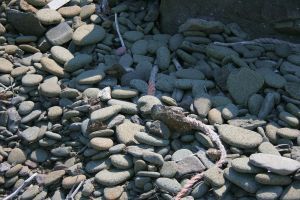
7-I had no clue who or where I was. When I opened my eyes, it seemed like I was in some sort of tunnel. Then the chilling cold hit and I realized I was semi-submerged in slowly flowing water that was covered with a thin sheet of ice.
8-She had that shade of red-gold hair that always made my heart stutter with a face to match, but the way she was staring at me was extremely unsettling. I’d never seen her before. Then she spoke those words no guy ever wants to hear; ‘We need to talk about last night.”
9-I vaguely remembered reading something about thin spots, but didn’t they exist in exotic places, not decrepit barns in Sclearville, Maine? That didn’t stop me from moving closer to the shimmering rectangle on the back wall of Bessie’s pen. What would happen if I touched it? My hand made the decision for me, extending until it was an inch from something inexplicable.
10-”Where’s Aunt Ruth?” I asked my uncle. Lester gave me one of those dead eye looks that always creeped me out. “She’s out back in that damn garden she loves more than me.” I hustled around the corner, hoping to see her weeding like she usually was, but all I saw was a fresh mound of dirt where her cucumber plants had been a week ago.

December 4, 2023
Yes Indeed, We Are What We Read
I was delighted to be asked to participate in this month’s edition of the terrific video blog WE ARE WHAT WE READ.
The episode was released yesterday. The link is here: https://www.youtube.com/watch?v=yhsZxFPN18k
WE ARE WHAT WE READ is a gratitude project of award-winning book reviewer Kristopher Zgorski, who’ll be honored with the Amelia Award at the Malice Domestic Mystery Convention this coming spring for his countless contributions to the crime writing community.  In addition to his must-read blog BOLO Books, Kristopher and his reviewing colleague Dru Ann Love recently became published authors themselves when their co-written short story Ticket To Ride was published in Happiness Is A Warm Gun, an anthology of stories inspired by Beatles songs.
In addition to his must-read blog BOLO Books, Kristopher and his reviewing colleague Dru Ann Love recently became published authors themselves when their co-written short story Ticket To Ride was published in Happiness Is A Warm Gun, an anthology of stories inspired by Beatles songs.
The co-host of WE ARE WHAT WE READ is Shawn Reilly Simmons, an award-winning author of nine novels, more than twenty short stories, who also is president and managing editor of Level Best Books.
Kristopher and Shawn invite a group of crime writers to gather on Zoom each month to discuss a book that moved them. The only rule is that the book must have been written by someone else. Otherwise, the writers have complete freedom to choose a book to recommend to viewers.
It’s been fascinating to see the variety of books folks have chosen over the eight episodes of the vlog. Historical and contemporary, traditional mysteries and thrillers, long or short. Some presenters talked up a book they first read 25 years ago. Others have highlighted one they finished last month. The only requirement is that they loved the book and would like to share it with friends.
The other writers who participated in the December episode would make anyone’s all-star team: Anjili Ferris Babbar, Alafair Burke, Vicky Delaney, Carol Goodman, Kate Jackson and Gigi Pandian. They talked about wonderful books, some of which I’ve read, others I’ll be seeking out.
 If you’re looking for holiday gift ideas, this episode of WE ARE WHAT WE READ is rich with ideas.
If you’re looking for holiday gift ideas, this episode of WE ARE WHAT WE READ is rich with ideas.
As for my book, I chose LIGHT ON BONE by Kathryn Lasky, which won the 2003 Maine Literary Award for crime fiction. Set in New Mexico in the 1930s, it features painter Georgia O’Keefe as an amateur sleuth.
You’ll have to tune in to hear more about why I chose this book, but I recommend it, and the video blog WE ARE WHAT WE READ, without reservation.
Brenda Buchanan brings years of experience as a journalist and a lawyer to her crime fiction. She has published three books featuring Joe Gale, a newspaper reporter who covers the crime and courts beat. She is now hard at work on new projects. FMI, go to http://brendabuchananwrites.com
Such a Good Man
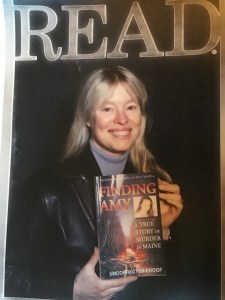 Kate Flora: It’s serendipity, given the way our monthly blog post schedule works, that I get to blog today. The timing is perfect, though, because tomorrow my eighth Joe Burgess police procedural, Such a Good Man, debuts. It’s kind of amazing to me that the series has reached Book 8, with another one in the plotting stage.
Kate Flora: It’s serendipity, given the way our monthly blog post schedule works, that I get to blog today. The timing is perfect, though, because tomorrow my eighth Joe Burgess police procedural, Such a Good Man, debuts. It’s kind of amazing to me that the series has reached Book 8, with another one in the plotting stage.
My original plan for the series was a quartet with one book set in each of the four seasons. Playing God begins on an icy February night. The Angel of Knowlton Park opens on a hot July morning. Redemption begins on Columbus Day weekend, and And Grant You Peace takes place in the spring. While I was planning to move on to something new, my readers had other plans. They wanted more Joe Burgess. I said, “But the four seasons,” and was told that Maine had lots of seasons: black fly season, tourist season, hunting season, mud season. I didn’t need to stop.
The truth was that I wasn’t ready to move on. For many of us who write series books, our characters become part of our lives. Sometimes we spend so much time with them we feel bereft when the book is done. I believe it was for The Angel, that I had had two different plots in mind–one for a Thea Kozak mystery and the other for a Burgess. Since I couldn’t decide which one to write, I decided I would sit down at the keyboard on January 1st and see which book demanded to be written first. The Angel won. Spurred on by a frequent remark by patrons at library events that “I’ve always wanted to write a book, and sometime, when I have a free weekend, I’ll write one,” I decided to see how fast I could write a book.
I spent four months doing little besides writing. I’d write eight to ten hours a day. I used up so many words that when I was done, I was useless for conversation because my store of words was depleted. And then, when I was done, it was as though my characters, who had become my closest friends, suddenly abandoned me. I missed them so much I had to start the next book to bring them back again.
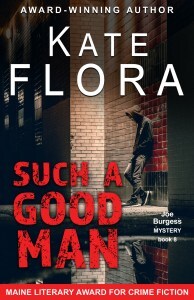 Knowing where to begin a book is a perpetual challenge for writers. I often tell my students “begin as close to the action as possible.” Don’t waste time on the set-up unless you can do it fast. The goal is to pull the reader into the story with a mystery, a situation that piques their curiosity, a character who intrigues them, and then hold them there. Such a Good Man begins:
Knowing where to begin a book is a perpetual challenge for writers. I often tell my students “begin as close to the action as possible.” Don’t waste time on the set-up unless you can do it fast. The goal is to pull the reader into the story with a mystery, a situation that piques their curiosity, a character who intrigues them, and then hold them there. Such a Good Man begins:
For once, the call hadn’t come in the middle of the night or in foul weather. It had come in on a sunny, end of September morning at a civilized hour when Burgess had already had his coffee. A homicide detective learned to be grateful for small things. As he stepped through the door into the neat and airy condo, he had something else to be grateful for: the place didn’t reek of decomposition, and the air wasn’t buzzing with flies.
We know what’s not there and now need to discover what is that has called out a homicide detective.
From the back of the book:
When Dr. Eliot Spence is found dead in his pristine condo, Detective Joe Burgess and his team must delve behind his glossy facade to reveal the doctor’s insatiable desires, his wife’s mysterious death, and a cache of revealing photos.
As Burgess and his colleagues strive to uncover the truth about the man whose colleagues described as a dedicated and compassionate doctor, they unearth a web of intrigue, shocking family secrets, and hidden agendas, testing their ability to separate fact from fiction.
While the detectives try to unravel the enigmatic world surrounding Dr. Spence, their own personal lives are under pressure as demands from their families threaten to derail the investigation, testing their determination–and ability–to bring justice to a man who seemed “Such a Good Man.”
Such a Good Man
ISBN: 978-1-64457-254-2
A reminder: Each holiday season, I write a holiday story and post it on my website. This year’s isn’t up yet, but you can read the others at http://www.kateclarkflora.com
I hope you enjoy them.
Lea Wait's Blog
- Lea Wait's profile
- 509 followers



